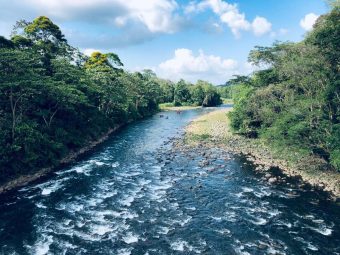
We asked two experts if the construction of small hydropower plants is a national interest, or a public interest is to stop the process of further construction of these power plants, and how to find the right balance between the need for clean energy on the one hand and the conservation of water resources, biodiversity, and the environment on the other. On the pages that follow, these questions were answered by Prof. Svetlana Stevovic, PhD, scientific advisor at the Innovation Centre of the Faculty of Mechanical Engineering, University of Belgrade, and Prof. Ratko Ristic, Dean of the Faculty of Forestry, University of Belgrade. You will notice that their points of view are sometimes contradictory. Nevertheless, they should help us understand the causes and consequences arising from this burning issue.
EP: Could we expect the effects of the rebellion against small hydropower plants to be transferred on to other renewable sources since there is always some environmental impact and the electricity bill includes – which is currently very negatively perceived – a compensation for privileged producers for all renewable energy sources and not just hydropower?

Svetlana Stevovic: Rebellion is always possible if the public is not well informed. The technological process of getting electricity is not cheap at all. Citizens are paying the highest price for the consequences of producing electricity from fossil fuels, primarily coal, among other things by their poor health. Similarly, subsidies in renewable energy (RES) are known to be one-off. They last for 12 years, after which RES is in the free market. As it turned out so far in Europe, these RES influenced the reduction of the total electricity price in the market. It is because RES projects, relieved of financial obligations after exiting the subsidy period, can drive down the cost. If you were to campaign against other RES sources, you could always find arguments against construction, as each construction causes some environmental disturbances, and through ecology, you can easily provoke rebellion and overturn any solution. One thing is for sure: the rebellion caused by the environmental impact of electricity generation, if this continues with protests against the use of RES, as well as the overthrowing large and necessary multi-purpose hydropower facilities, could easily be transformed into a revolt caused by a lack of electricity.
Ratko Ristic: I do not believe that the rebellion against SHPPs will affect resistance to other forms of RES, as they do not have such negative environmental consequences. Every human activity has some negative consequences for the natural environment. Still, if there is a clear consensus on the public interest, that is, the interest of the majority of citizens in an area, then the project is ethically acceptable. In the case of SHPPs, only individuals and interest groups benefit, with significant adverse environmental consequences, which is not acceptable to most citizens in our country.

EP: What has changed in our country and the world since the Cadastre of SHPP (which defined 856 potential sites for the construction of SHPP with a total capacity of 450 MW) in 1987? Do today’s SHPPs problems arise partly from the implementation of this outdated document?
Svetlana Stevovic: Before I got my PhD and went to faculty, while working in Energoprojekt – Hydro engineering, at the Hydropower Systems Bureau, as a young engineering designer I was a participant in the development of the Serbian Cadastre of SHPPs. One of the key purposes of that document at the time was for the military. The Cadastre was made with the basis of technological development from that period, with different hydrological inputs and property relations. Due to climate change, hydrological regimes have changed in the world and in Serbia, the extremes have become more intense and more frequent, and each project done decades ago would have to be updated. Otherwise, in Serbia, the Cadastre of SHPPs was repealed under the Law on spatial planning. For the purpose of the construction of a small hydropower plant, it can only be used today as an information base. Each SHPP investor is obliged to create entirely new substrates with current data in the field of geology, geodesy and hydrology. In addition, public authorities thoroughly review the social, energy and other aspects of the current state of the site and issue conditions in accordance with all restrictions, and the answer may be negative. To conclude, referring to the 1987 Cadastre as a problem is merely a fiction of the opponents of the construction of SHPPs.
Ratko Ristic: Numerous administrative procedures were started by referring to the Cadastre of Small Hydropower Plants (from 1987), which was never adopted as an official state document, which caused a lot of problems. Since 1987, there have been drastic modifications of the hydrological regime on numerous small watercourses, and during the design of the so-called Cadastre, no one considered nature protection.
EP: At what point is the impact on the natural environment considered during the construction of the SHPP?
Svetlana Stevovic: Analysis is made at an early stage of the project documentation development. When the investor is in the phase of developing a conceptual design for SHPP, a request is submitted to the Institute for nature conservation of Serbia, whose expert services decide whether or not a site can be built and, if so, under what conditions. Also, if the response from the Institute for nature conservation of Serbia for a site is positive, it is further evaluated through the Environmental Impact Assessment Study. During the construction, construction, water and environmental inspectors check whether the works are performed according to the issued acts or not.
Ratko Ristic: It is envisaged that the appropriate inspection services monitor the process of construction of SHPP, from the beginning through all phases, until completion (construction, ecological, forestry, and water management inspection), and to record all irregularities, which they partially do. However, there are numerous examples where inspections do not act on reports or respond inappropriately (cases of laying pipelines in riverbed for high water and removing coastal vegetation in sections of several kilometers, which is explicitly prohibited; perforating barriers to install pipelines; diverting water flow from the natural trough; self-willed change of intended construction sites; construction of access roads without evacuation bodies for surface water, which thus become a source of erosion material and accelerate the formation of flood runoff; destruction of habitats of strictly protected species.)
Interviews by: Tamara Zjacic
Read the whole interview in the new issue of the Energy portal Magazine on CLIMATE CHANGE, september-november 2019.



